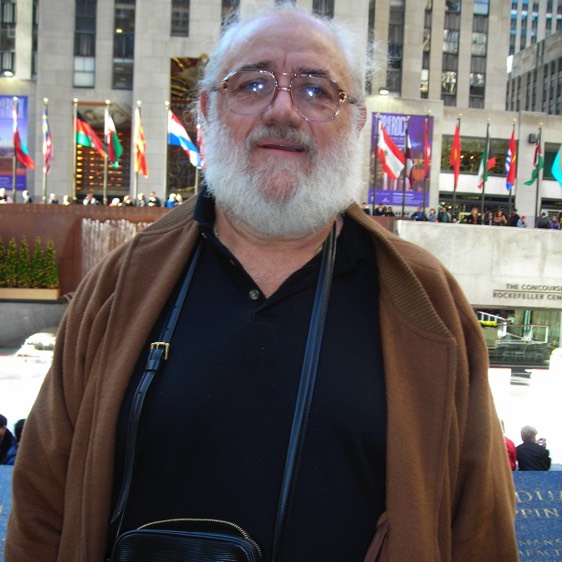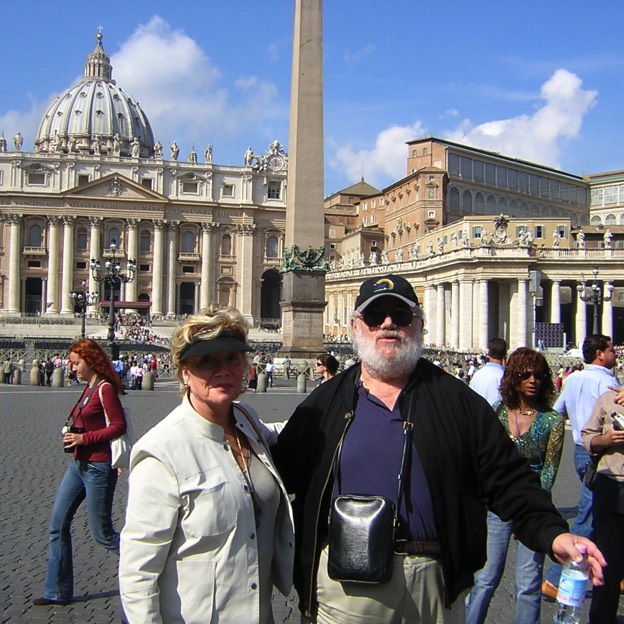
Francois Marie Lucet's training and experience have honed his sensibilities to the point that his advice is sought out by collectors interested in early 20th century French painting, especially Braque, Juan Gris, Van Gogh, and Monet. For many years, however, there has been a little known facet of Lucet's connoisseurship: to strengthen his own appreciation and knowledge of his favorite French artists, he has studiously "re-created" some of their paintings. Once completed, and the aesthetic or technical issues resolved, the paintings are signed "Lucet" and usually sent to delighted friends abroad.
Recently, Lucet became intrigued by the inexplicable contemporary qualities he perceived in Ethiopia's austere religious art, especially the icons and frescoes in the inaccessible monasteries and isolated churches. The task he proposed for himself was to discover how a 600 year old rigid and tradition bound system of religious images, with such an economy of line and color, could produce an art with any perceptible modern qualities.
After an intense study of original Ethiopian icons and reproductions, Lucet started a series of paintings he called "paraphrases of Ethiopian religious images." He simulated the surfaces with burlap cloth fragments which he covered with numerous thin coats of plaster, and he limited himself to the restricted Ethiopian palette of green, red and yellow.
After numerous and frustrated efforts to capture the hues of the mineral pigment colors of the originals with acrylic paint, Lucet eventually began to isolate and catalogue the tonalities and the forms which represented the elements of the Ethiopian tradition.
Recently, Lucet became intrigued by the inexplicable contemporary qualities he perceived in Ethiopia's austere religious art, especially the icons and frescoes in the inaccessible monasteries and isolated churches. The task he proposed for himself was to discover how a 600 year old rigid and tradition bound system of religious images, with such an economy of line and color, could produce an art with any perceptible modern qualities.
After an intense study of original Ethiopian icons and reproductions, Lucet started a series of paintings he called "paraphrases of Ethiopian religious images." He simulated the surfaces with burlap cloth fragments which he covered with numerous thin coats of plaster, and he limited himself to the restricted Ethiopian palette of green, red and yellow.
After numerous and frustrated efforts to capture the hues of the mineral pigment colors of the originals with acrylic paint, Lucet eventually began to isolate and catalogue the tonalities and the forms which represented the elements of the Ethiopian tradition.

Lucet says that the question he posed at the outset was more or less resolved recently while he was coloring a segment of a Madonna's robe. Lucet observed that the flat plane minimal contoured units of form-the head, hands, and garment layers of the figures-if thought of as abstract units separated by lead instead of the characteristic thick black lines of the Ethiopian artists, the frescoes and icons would then appear to be constructed very much like the segments of a stained glass window. The restricted coloration within these forms was also significant. Interestingly, only the stained glass Matisse designed in the late 1950s for the Chapel of the Rosary in Venice utilized so limited a range of colors-in fact, Matisse chose almost the identical Ethiopian palette: ultramarine blue, green, and yellow.
Matisse's stained glass design itself arose from the cutout compositions of those final years which are also abstracted colored red forms set into proximity with each other, very much like Lucet's segmented Ethiopian images. Lucet's conclusion was that, despite its formulaic quality, Ethiopian religious art has a discernible inherent "modern" urge toward abstraction in design and composition.
Instead of a treatise, however, Lucet emerges from his unique way of studying art with more art-he is both sides of the coin; artistic scholar and scholarly artist. It is as if Lucet takes literally Jacob Bronowski's principal governing the successful interaction between viewer and object-the dialogue between the significant and the sign: ...the work of art is not something that you can look at passively. It must move you to pose two different questions. One is, What was he trying to do? And the other is, Why did he do it that way? [The viewer must ask not only] "I see what it is for," but also, "I see how it was done"...until you have answered that (latter) question, you have not recreated the work, and no work speaks to you until you recreate it.
Matisse's stained glass design itself arose from the cutout compositions of those final years which are also abstracted colored red forms set into proximity with each other, very much like Lucet's segmented Ethiopian images. Lucet's conclusion was that, despite its formulaic quality, Ethiopian religious art has a discernible inherent "modern" urge toward abstraction in design and composition.
Instead of a treatise, however, Lucet emerges from his unique way of studying art with more art-he is both sides of the coin; artistic scholar and scholarly artist. It is as if Lucet takes literally Jacob Bronowski's principal governing the successful interaction between viewer and object-the dialogue between the significant and the sign: ...the work of art is not something that you can look at passively. It must move you to pose two different questions. One is, What was he trying to do? And the other is, Why did he do it that way? [The viewer must ask not only] "I see what it is for," but also, "I see how it was done"...until you have answered that (latter) question, you have not recreated the work, and no work speaks to you until you recreate it.